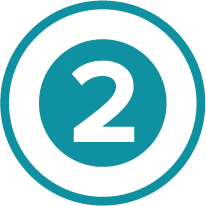INTER-PROFESSIONAL PROGRAMS
FIRST PLACE WINNER:
Lauren Hutton
Nova Scotia Health
Lauren Hutton was awarded a 1st Place HOPE Award in Inter-Professional Programs to Support Patient Care for their project, ‘Prostate Cancer Shared Care Pharmacy Clinic’.
Lauren and her team recognized that oncology teams in Halifax, Nova Scotia were under resourced to provide the essential care needed for patients with cancer. This reflects the existing care delivery model that did not include pharmacists providing care to their full scope. Therefore, Lauren and her team identified an opportunity to establish and iterate a new pharmacy model to provide impactful care to patients and create space for more patients to receive the timely cancer care they need.
Lauren then developed a framework for two physicians/nurse teams to work collaboratively to support patient care at three specific points in time:



New Start (telephone):
-
- Clinical work up and drug interaction assessment
- New start medication education/answer questions
Early in Treatment (first 3 months – telephone and in-person):
-
- Ongoing education / answer questions
- Laboratory and toxicity/symptom monitoring
- Dosage adjustments and toxicity management as needed.
Longitudinal clinic visits q6months (in-person, alt with MD/RN):
-
- Ongoing education / answer questions
- Laboratory and toxicity monitoring
- Comprehensive symptom assessment and referrals PRN
- Preventative bone health care
- Best possible medication history and drug interaction check
The team spent time ideating, testing and iterating the ideal framework through different capacity, logistics, physician team, and patient population models. The team landed on a model which focuses on individuals with prostate cancer who were being treated with oral anticancer therapy. Insofar as logistics and scheduling, the clinic maintained the flow of physicians and booking clerks who book repeat visits for their patients to ensure clinic efficiency and reduced the chance of missed referrals due to process related barriers.
During a 20-month period, there was a total of 352 unique patient encounters (supporting 88 discrete patients). The interventions that patients were being supported with included new start education (n=29), education after being established on treatment (n=122), adherence assessments (n=238), toxicity assessments (n=257), best possible medication histories (n=149) and resolving over 200 drug therapy problems primarily related to supportive care medications.
Ultimately, there were a number of factors that led to the success of the clinic. To highlight a few, Lauren suggested that it’s important to have a clear idea of what you can bring to a patient population or clinic, and to be committed to making improvements so that services can be provided in a comprehensive and reproducible way for all patients. It’s important to measure services and track metrics so that your clinic program can be refined and revised, and ultimately scaled and spread to serve more patients. Finally, Lauren shares that it is important to work collaboratively and cross functionally as a team at the time of care in order to ensure that the full benefit of having a pharmacist as part of the team is realized.
INTER-PROFESSIONAL PROGRAMS
FIRST PLACE WINNER:
Lauren Hutton
Nova Scotia Health
Lauren Hutton was awarded a 1st Place HOPE Award in Inter-Professional Programs to Support Patient Care for their project, ‘Prostate Cancer Shared Care Pharmacy Clinic’.
Lauren and her team recognized that oncology teams in Halifax, Nova Scotia were under resourced to provide the essential care needed for patients with cancer. This reflects the existing care delivery model that did not include pharmacists providing care to their full scope. Therefore, Lauren and her team identified an opportunity to establish and iterate a new pharmacy model to provide impactful care to patients and create space for more patients to receive the timely cancer care they need.
Lauren then developed a framework for two physicians/nurse teams to work collaboratively to support patient care at three specific points in time:

New Start (telephone):
-
- Clinical work up and drug interaction assessment
- New start medication education/answer questions

Early in Treatment (first 3 months – telephone and in-person):
-
- Ongoing education / answer questions
- Laboratory and toxicity/symptom monitoring
- Dosage adjustments and toxicity management as needed.

Longitudinal clinic visits q6months (in-person, alt with MD/RN):
-
- Ongoing education / answer questions
- Laboratory and toxicity monitoring
- Comprehensive symptom assessment and referrals PRN
- Preventative bone health care
- Best possible medication history and drug interaction check
The team spent time ideating, testing and iterating the ideal framework through different capacity, logistics, physician team, and patient population models. The team landed on a model which focuses on individuals with prostate cancer who were being treated with oral anticancer therapy. Insofar as logistics and scheduling, the clinic maintained the flow of physicians and booking clerks who book repeat visits for their patients to ensure clinic efficiency and reduced the chance of missed referrals due to process related barriers.
During a 20-month period, there was a total of 352 unique patient encounters (supporting 88 discrete patients). The interventions that patients were being supported with included new start education (n=29), education after being established on treatment (n=122), adherence assessments (n=238), toxicity assessments (n=257), best possible medication histories (n=149) and resolving over 200 drug therapy problems primarily related to supportive care medications.
Ultimately, there were a number of factors that led to the success of the clinic. To highlight a few, Lauren suggested that it’s important to have a clear idea of what you can bring to a patient population or clinic, and to be committed to making improvements so that services can be provided in a comprehensive and reproducible way for all patients. It’s important to measure services and track metrics so that your clinic program can be refined and revised, and ultimately scaled and spread to serve more patients. Finally, Lauren shares that it is important to work collaboratively and cross functionally as a team at the time of care in order to ensure that the full benefit of having a pharmacist as part of the team is realized.
